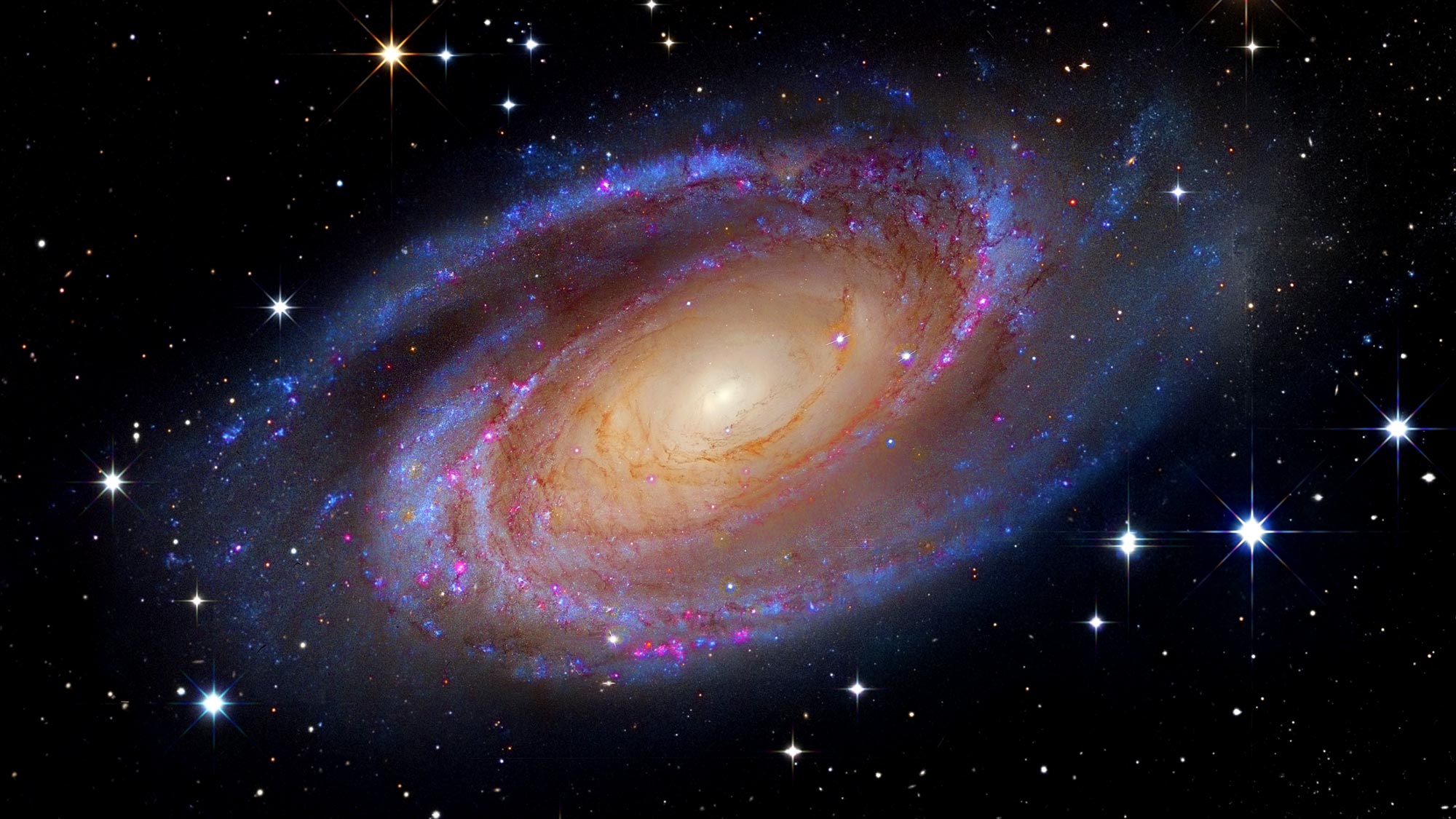The Milky Way, Our Galaxy
The Milky Way is a barred spiral galaxy that is home to our solar system and countless other stars, planets, and celestial bodies. It is estimated to be between 100,000 and 180,000 light-years in diameter and contains between 100 and 400 billion stars. The galaxy is named after its appearance from Earth, which resembles a milky band of light across the sky.
The Milky Way is located in the Local Group, a cluster of about 54 galaxies, including the Andromeda Galaxy, Triangulum Galaxy, and several dwarf galaxies. The Local Group is a part of the Virgo Supercluster, a collection of more than 100 galaxy groups and clusters that spans over 110 million light-years.
The Milky Way's structure is comprised of several distinct components. The galactic center is a dense region located about 27,000 light-years away from Earth, which contains a supermassive black hole that has a mass of about 4.3 million times that of the sun. The galactic center is also home to a large cluster of stars and a vast amount of gas and dust.
The Milky Way's spiral arms are a series of long, curved features that extend from the galactic center. These arms are formed by the density waves that ripple through the galaxy's gas and dust, causing regions of higher density to collapse and form new stars. Our solar system is located within one of these arms, known as the Orion Arm or Local Spur.
The Milky Way's halo is a spherical region that surrounds the galaxy's disk and contains a large amount of dark matter. Dark matter is a hypothetical form of matter that is believed to account for most of the matter in the universe, but it cannot be directly observed. The halo also contains a population of old stars and globular clusters, which are tightly packed groups of stars that orbit the galactic center.
The Milky Way has been studied extensively by astronomers, who use a variety of techniques to learn about its structure and evolution. Observations of the galaxy's stars, gas, and dust have provided insights into the history of star formation and the chemical composition of the interstellar medium. Studies of the galaxy's motion and dynamics have revealed the presence of dark matter and the structure of the galactic disk.
The Milky Way has played a significant role in human culture and mythology for thousands of years. In many ancient cultures, the Milky Way was believed to be a pathway between the realms of the living and the dead. The ancient Greeks believed that the Milky Way was created by the goddess Hera, who spilled milk across the sky while breastfeeding the infant Hercules.
Today, the Milky Way continues to inspire awe and wonder in people around the world. The galaxy's stunning beauty and complexity remind us of the vastness and mystery of the universe, and the ongoing exploration of the Milky Way and other galaxies is a testament to human curiosity and ingenuity. As we continue to study and learn about the Milky Way, we gain a deeper understanding of our place in the cosmos and the nature of the universe itself.

/img/iea/nZwXlJlxwv/andromeda.jpg)
Comments
Post a Comment
Follow for more! If you have any doubts or suggestions, let us know!